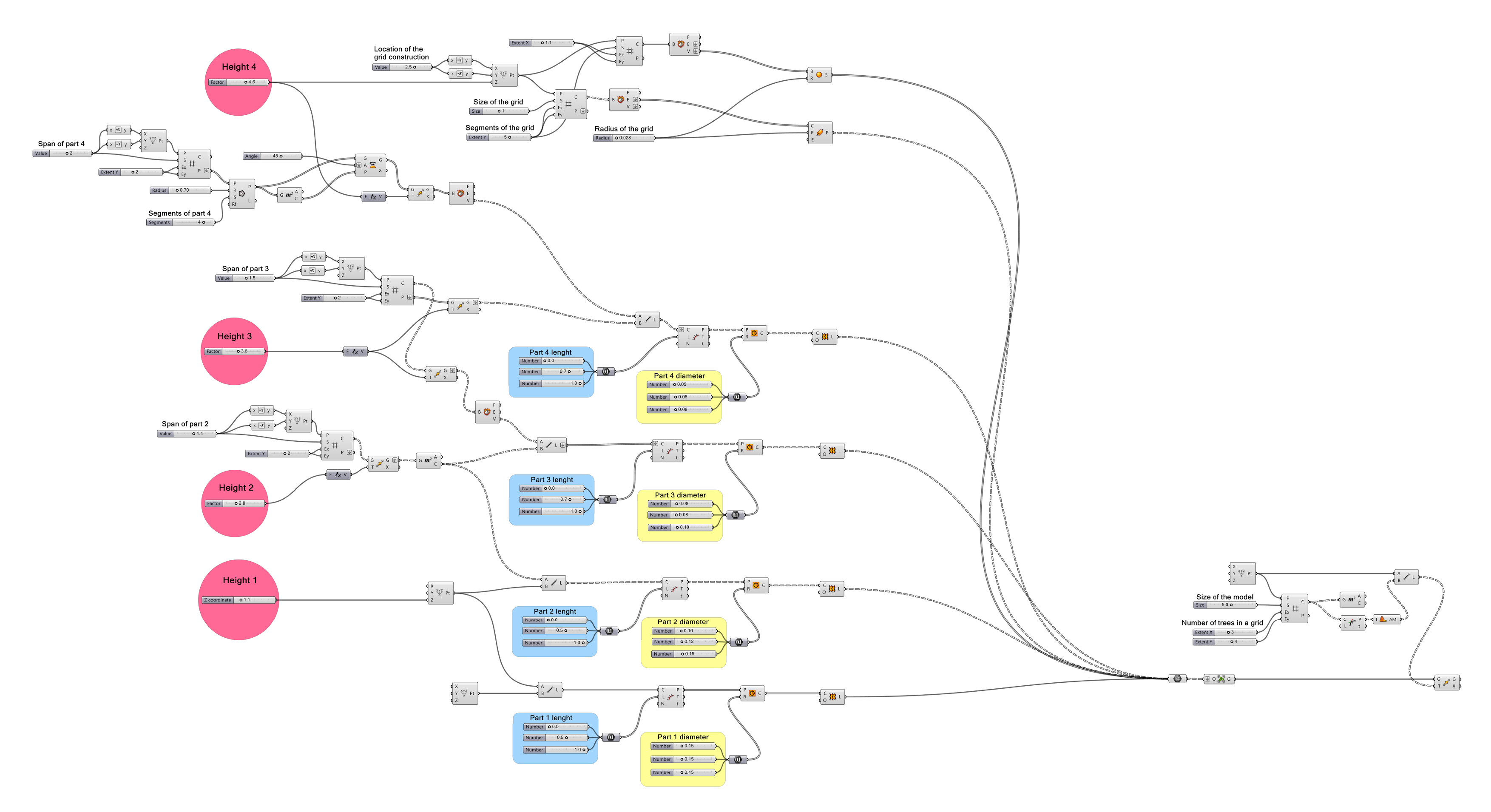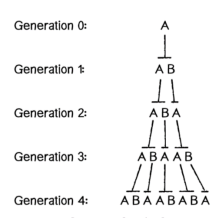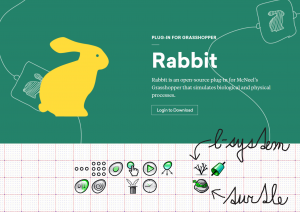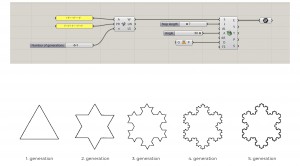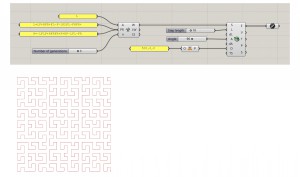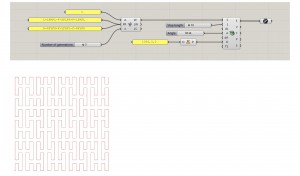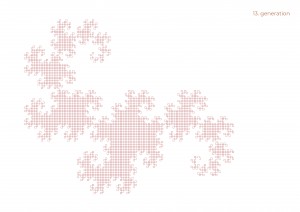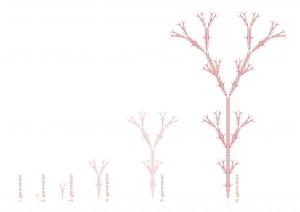In 1968, Hungarian botanist Aristid Lindenmayer developed a grammar-based system to model the growth patterns of plants. Lindenmayer systems — or L-systems for short. This system was made as a mathematical theory of plant development.
L-systems involves three main components:
1. Alphabet: a set of valid characters that can be included in a “sentence”. For example, if the alphabet is “ABC”, any valid “sentence” will contain the three characters : A, B and C.
2. Axiom: The sentence that describes the initial state of the system. For example, using the alphabet “ABC,” some example axioms are “AAA” or “B” or “ACBAB.”
3. Rules: they are applied to the axiom and then applied recursively, generating new sentences over and over again. An L-system rule includes two sentences, a “predecessor” and a “successor.” For example, with the Rule “A → AB”, whenever an “A” is found in a string, it is replaced with “AB.”
Example
Alphabet: A B
Axiom: A
Rules: (A=AB) (B=A)
Plug-in Rabbit
I used plug-in Rabbit: https://morphocode.com/rabbit/
This type of drawing framework is called “Turtle graphics”, it is like having a turtle in the screen and being able to command it to move in different directions.
L-system commands
F move forward at distance L and draw a line
f move forward at distance L without drawing a line
+ turn left A degrees
– turn right A degrees
[ save current location
] restore previous location
A/B/C/D placeholders
Snowflake
Hilbert curve
Peano curve
Dragon curve
Plant
Greenhouse structure
In the Grasshopper script you can change the height of each level of pipes – pink circle.
And in the blue and yellow rectangle you can change length and diameter in each level of the structure.
Grasshopper file: L-system to greenhouse structure
